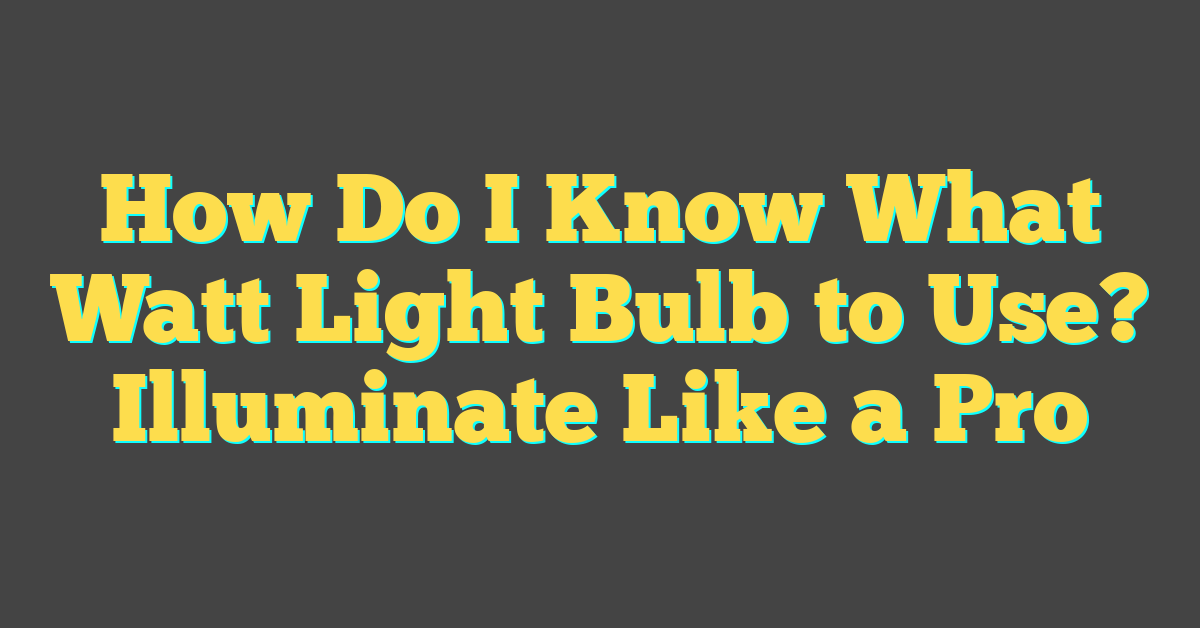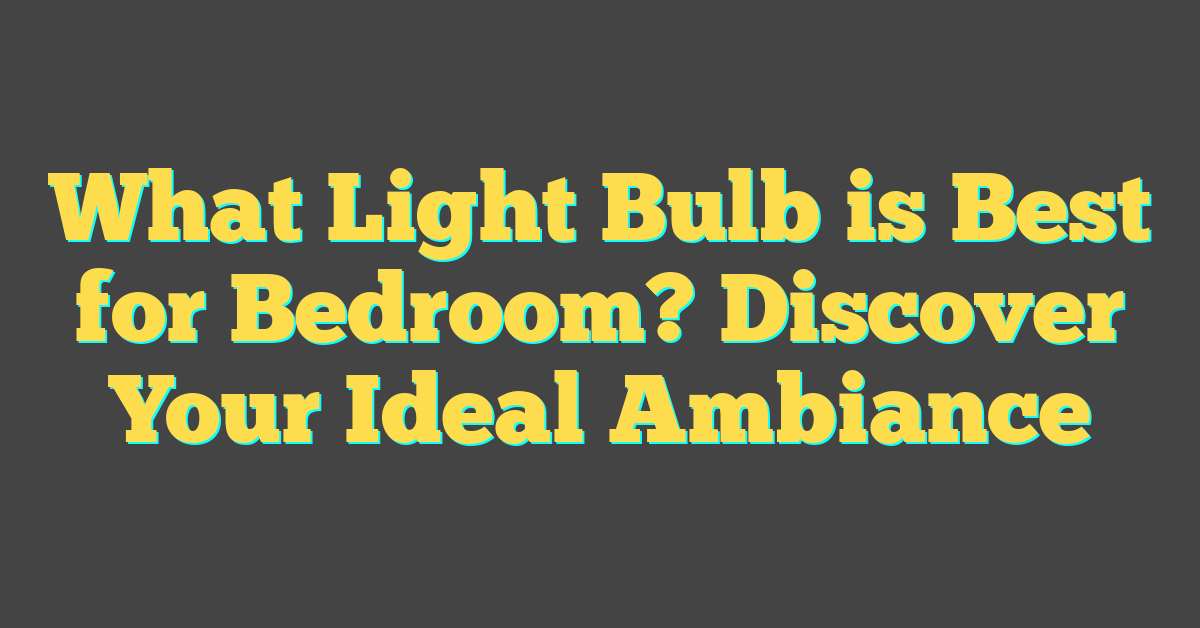Ever stood in the lighting aisle of your local hardware store, staring at the shelves wondering which light bulb size fits your needs? You’re not alone. Choosing the right size light bulb for your lamp or fixture can be a tad confusing, but it’s crucial for achieving the perfect ambiance and functionality in your space.

Different types of light bulbs
When you’re standing in the aisle of your local hardware store, bewildered by the myriad of light bulbs before you, remember there’s more than just size to consider. Different types of light bulbs can offer varied lighting solutions for your home. Let’s illuminate the subject and explore some of the most common bulb types you’ll encounter.
Incandescent bulbs are often what you picture when you think of a traditional light bulb. They emit a warm, inviting light and are usually the most affordable option. Ideal for lamps that require a cozy, ambient glow, these bulbs are perfect for living areas where you want to relax and unwind.
Moving on, halogen bulbs provide a brighter, crisper light that mimics natural daylight. They’re energy-efficient, last longer than incandescents, and work wonders in spaces where you need to pay attention to detail, like your workspace or kitchen counters. However, these bulbs run hotter, so they might not be ideal for every fixture.
If you’re seeking something even more energy-efficient, you can’t go wrong with compact fluorescent lamps (CFLs). These curly cues save you bucks on your electricity bill and have a larger size range. They offer a cooler light, which is great for utility spaces or areas where you don’t need overly warm tones.
Lastly, the new kids on the block are LED bulbs. These are the champions of energy efficiency and longevity. LED bulbs come in a spectrum of colors and temperatures, allowing you to customize the mood of every room to your heart’s content. They’re ideal for virtually every setting due to their versatility and the immediate, bright light they provide.
Remember to always check the maximum wattage your lamp or fixture can handle before purchasing a bulb. Matching the right type to your specific needs ensures you’ll not only brighten a space but also tailor the atmosphere to what feels best for you. After all, lighting isn’t just about seeing clearly—it’s about creating the perfect environment for every moment in your home.
Understanding bulb sizes
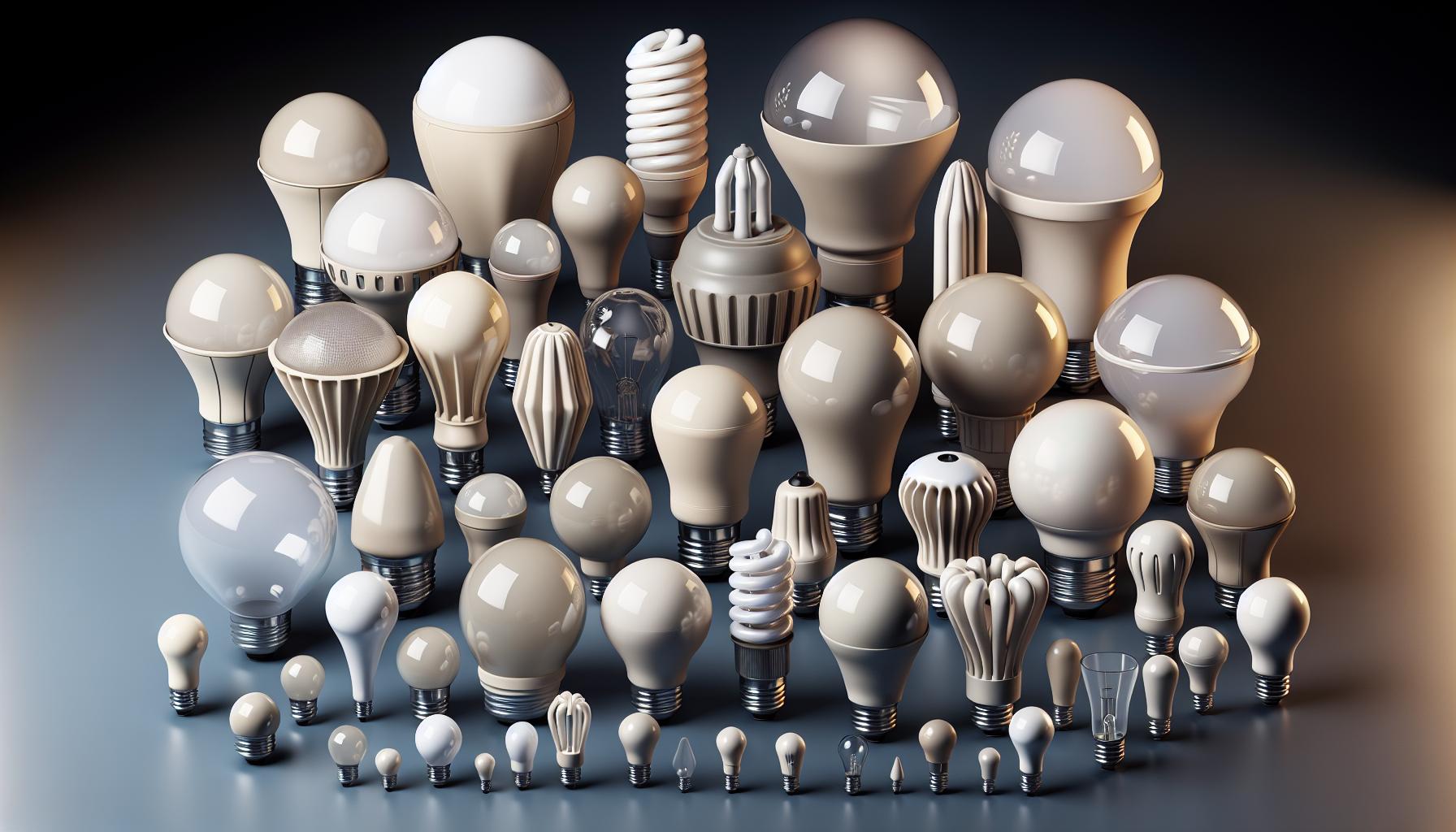
Light bulbs are not a one-size-fits-all affair. When you’re knee-deep in a DIY project, the last thing you want is to have a bulb that doesn’t fit! Let’s dive into the nitty-gritty of bulb sizes so you can light up your space just the way you envisioned.
First off, you need to familiarize yourself with the term “bulb base.” This is the part of the bulb that screws into your lamp or fixture. Most bulb bases in the United States follow the Edison Screw standard, which means they’re denoted by an “E” followed by a number. This number refers to the diameter of the base in millimeters. So, an E26 base — the most common household bulb base size — has a diameter of 26 millimeters.
Here’s a quick reference for the standard base sizes you’ll encounter:
| Base Standard | Diameter (mm) |
|---|---|
| E12 | 12 |
| E17 | 17 |
| E26 | 26 |
| E39 | 39 |
But don’t overlook the bulb’s form factor. That’s the shape and size of the bulb itself. A19 bulbs are your typical incandescent shape, something you’re probably picturing when you think of a “light bulb.” For downlights or spotlights, you might be looking at PAR (Parabolic Aluminized Reflector) or BR (Bulged Reflector) bulbs, which direct light in a focused beam.
Lighting up a decorative fixture? Then the form factor becomes even more crucial for aesthetic purposes. Chandeliers, for instance, often use candelabra bulbs (typically E12 base) that contribute to their elegance with a flame-like design.
Remember, getting the right bulb size isn’t just about aesthetics or function—it’s also about compatibility and safety. You’re never alone in this journey; manufacturers usually print maximum wattage and size information right on the fixture itself. Keep an eye out for that, and you’re golden.
Whatever your space requires, there’s a bulb out there that fits like a glove. So grab that manual, and match those numbers; you’ll have the perfect ambiance in no time.
Factors to consider in choosing the right size light bulb
« How Long Do Rechargeable Light Bulbs Last? Maximize Lifespan with These Tips
What Light Bulbs Do Scentsy Warmers Use? Find Your Perfect Match »
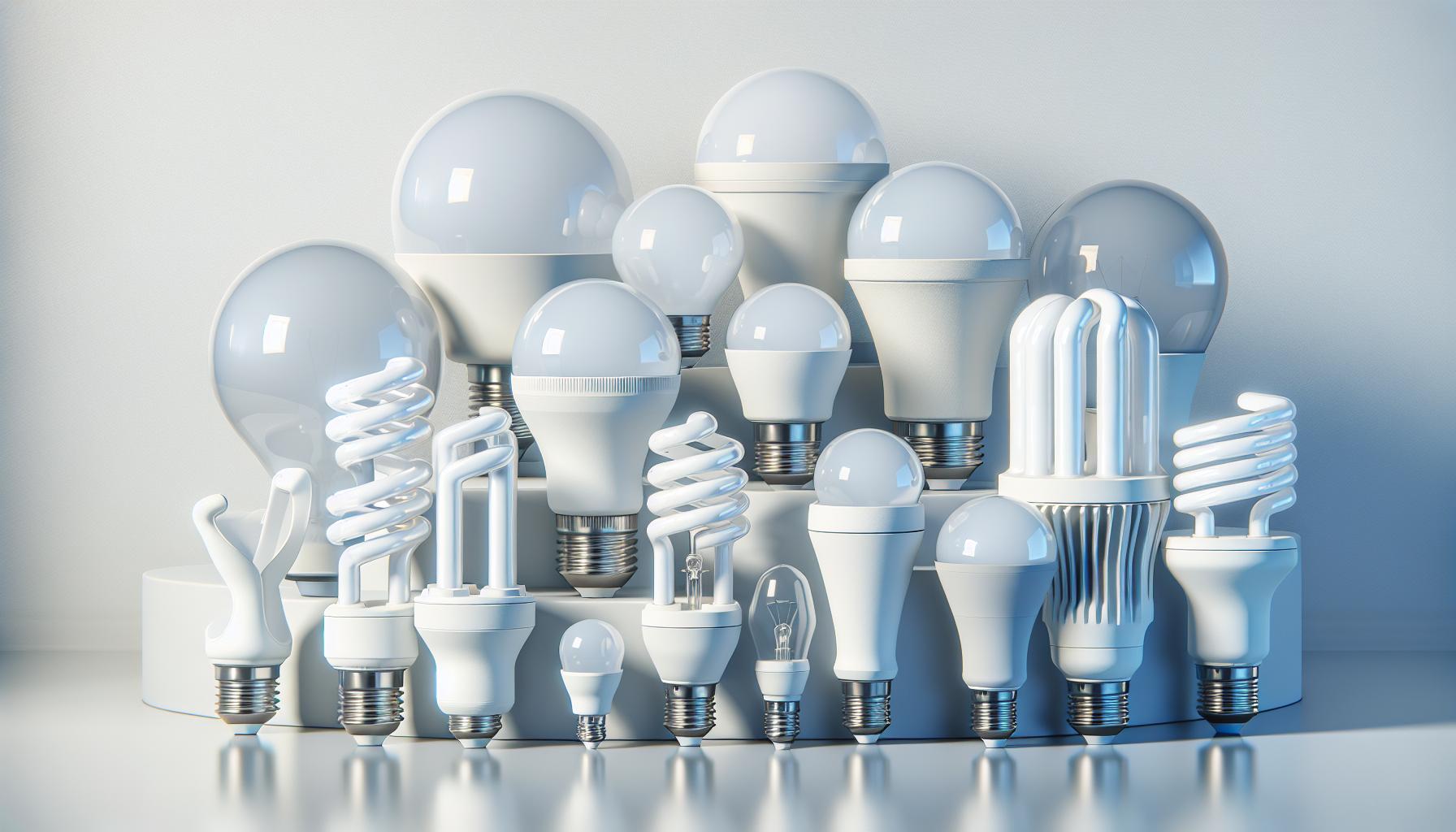
Bulb Wattage
A key factor to weigh in is the wattage of the light bulb. You definitely wouldn’t want a bulb that’s too powerful for the lamp’s capacity as it can lead to potential hazards. Most lamps will specify the maximum wattage they can handle. Stick within these guidelines:
- Table lamps: Generally, these can accommodate bulbs up to 60 watts.
- Floor lamps: Typically, these are suited for bulbs up to 100 watts.
- Ceiling fixtures: Check for the specific maximum wattage which can vary greatly.
Lumens and Light Output
Another aspect you can’t overlook is lumens, which measures the light output. You’re looking for that sweet spot where the room is neither too dim nor blindingly bright. Here’s a quick cheat sheet:
| Space | Recommended Lumens |
|---|---|
| Living Room | 1,500 – 3,000 |
| Kitchen | 5,000 – 10,000 |
| Bedroom | 2,000 – 4,000 |
| Home Office | 3,000 – 5,000 |
Bulb Length and Profile
The length and overall profile of the bulb should complement the fixture. For instance, a long tube bulb might look out of place in a compact desk lamp. Consider the following:
- Bulb Length: Measure the maximum length your fixture can house without the bulb sticking out in an unsightly manner.
- Bulb Profile: Choose a bulb shape that enhances the appearance and functionality of the lamp.
Energy Efficiency
With the rise of LED technology, energy efficiency is a hot topic. Opting for an LED bulb not only helps the environment but can also trim your electricity bill. Check out the energy rating on the packaging; this will guide you to a more efficient choice.
Dimmability
If you’re a fan of ambience or need variable lighting, dimmable bulbs are your go-to. Not all bulbs have this feature, so you’ll need lamps or fixtures with compatible dimmer switches. Just remember:
- Confirm the bulb is labeled as dimmable.
- Ensure your dimmer switch is designed for LED or CFL bulbs if you’re not using incandescent ones.
How to determine the size of a light bulb
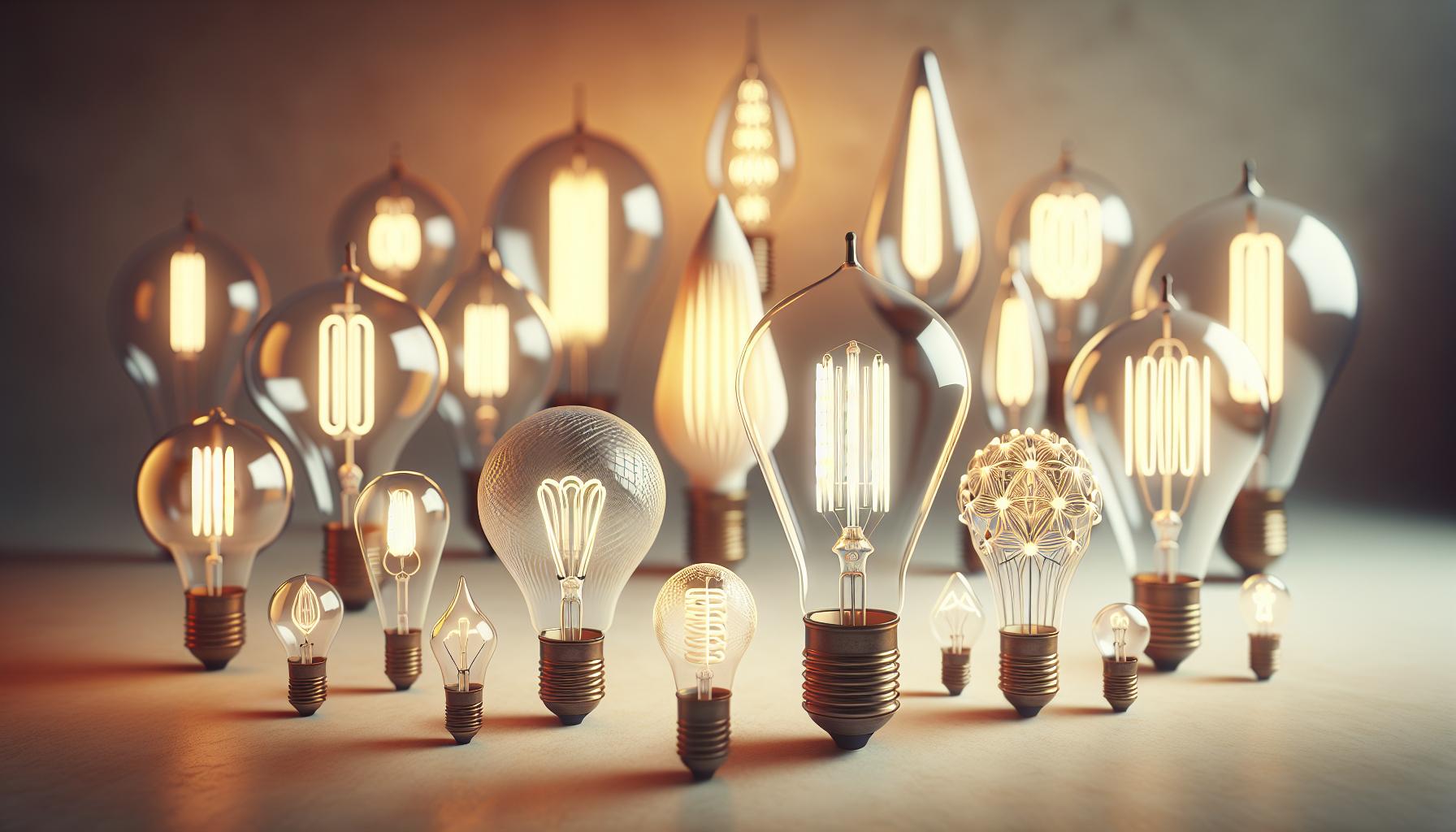
When you’re looking to determine the right size for a light bulb, there are a few key aspects you’ll want to consider beyond wattage and lumens. It’s not just about the amount of light; it’s about fitting your space perfectly both physically and aesthetically.
First, measure the opening of your light fixture to ensure you’ve got enough room for the bulb you’re considering. The base of the bulb, typically an E26 for standard bulbs in the US, needs to match the fixture’s socket. Don’t overlook the height and width of the bulb—especially if your lamp or fixture has a shade or cover.
Think about the existing bulbs in your home. You’ll likely find most common bulbs follow standard sizes:
- A19 for your everyday lamps and fixtures
- A21 for a slightly larger size
- Globe sizes, like G25 or G30, for vanity lights
For recessed lighting, you’ll want to pay attention to the designation of the bulb, like BR30 or PAR38, which indicates both the shape and size.
Next, consider the location of the bulb. If it’s in a hard-to-reach area, you might opt for a bulb with a longer lifespan to reduce the frequency of replacement. Bulbs like LEDs have a significantly longer life compared to traditional incandescent bulbs, which means fewer changes and even savings in the long term.
Lastly, take into account the profile of the bulb. For fixtures where the bulb will be visible, you might want a more decorative bulb, such as an Edison style with a vintage look, or perhaps a bulb with a frosted finish for a softer light.
To sum up, finding the perfect bulb size involves:
- Measuring the fixture opening and ensuring compatibility with the base and shape
- Considering the bulb’s location and accessibility
- Choosing a profile that matches your aesthetic and functional preferences
Keep in mind that the right light bulb not only illuminates your space but also enhances the overall mood and design of your home. With precise measurements and a keen eye for detail, you’re well on your way to lighting your home like a pro.
Common light bulb sizes
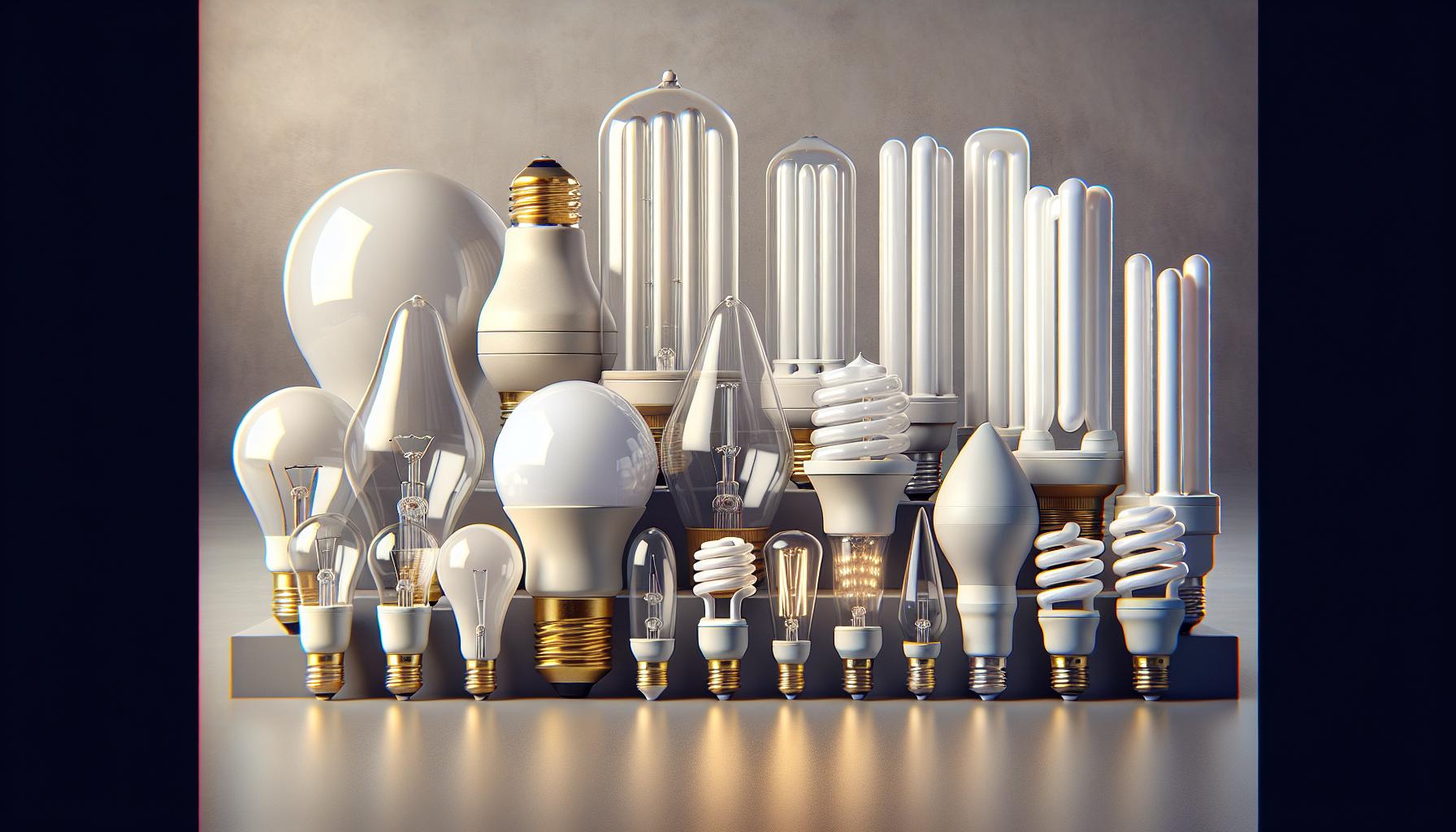
When you’re knee-deep in a home DIY project, picking the right size light bulb is akin to selecting the perfect accessory—it just has to be right. If you’re rummaging through the aisle of your local hardware store or perusing options online, it helps to know about some common light bulb sizes that are used regularly in households.
A19 bulbs are perhaps the most common size you’ll encounter. This one’s your standard, go-to bulb for table lamps and overhead fixtures alike. It’s the quintessential bulb shape that springs to mind for most folks when they picture a lightbulb. Don’t let its commonness fool you, though; it’s a trusted size for a reason — versatility.
Next, the C7 and C9 bulbs generally grace your home during the holidays. They’re the decorative darlings of the bulb world, often found in those enchanting string lights that illuminate your home with a festive spirit.
If you’ve got a chandelier or sconce demanding something with a little more elegance, the B11 candelabra bulbs step into the limelight. With their sleek, tapered design, they are skinny at the base and widen toward the top, providing an air of sophistication to your lighting arrangement.
For those big, bold statement pieces or commercial spaces, T8 and T12 fluorescent tubes have got you covered. Despite a shift towards LED alternatives, they are still widely used in garages and workshops for their superior brightness and long, linear shape.
Here’s a quick reference breakdown of some common light bulb sizes:
| Bulb Type | Common Usage |
|---|---|
| A19 | Table lamps, overheads |
| C7/C9 | Holiday lighting, decor |
| B11 | Chandeliers, sconces |
| T8/T12 | Workspaces, commercial |
Remember, it’s not all about aesthetics; the size of your light bulb is a fundamental aspect in ensuring it fits snugly into the socket. Moreover, the size can influence the dispersion of light, which is pivotal for creating the right ambiance. Whether it’s the cozy glow in your reading nook or the bright white light flooding your kitchen workspace, always keep the function the light will serve at the forefront of your decision.
Conclusion
You’ve got all the tools you need to pick the perfect light bulb size for your space. Remember, it’s not just about the fit—it’s about how the light serves your room. With the right wattage, lumens, and shape, you’ll ensure your fixtures shine their best. So go ahead, choose with confidence and light up your world just the way you like it.
Frequently Asked Questions
What factors should I consider when choosing the right size light bulb?
When selecting a light bulb, consider the wattage, lumens, light output, length, profile, and base to ensure it fits properly in your fixture. Also, consider the bulb’s lifespan, energy efficiency, and how the bulb’s design will complement your space.
How does wattage affect my light bulb choice?
Wattage indicates the energy consumption of the bulb. Choose a wattage that offers enough light while being compatible with your fixture’s maximum wattage rating to avoid safety issues.
What should I know about lumens when selecting a light bulb?
Lumens measure the brightness a bulb provides. More lumens mean a brighter light, so choose a bulb with lumens appropriate for your desired illumination level.
Why is the base of the light bulb important?
The base of the light bulb must match the socket of your fixture. Incorrect base sizes will prevent the bulb from fitting or functioning correctly.
How do I select the right bulb size for different types of fixtures?
Choose bulbs that are designed for the specific fixture type, such as A19 bulbs for standard lamps or T8/T12 for tubular fixtures. The bulb size should facilitate proper light dispersion and fit.
Can the location of the bulb installation affect my choice?
Absolutely. Consider how accessible the bulb will be for future replacements and whether the location calls for a durable design, especially for hard-to-reach fixtures.
What is the significance of a light bulb’s lifespan and energy efficiency?
A bulb with a longer lifespan and higher energy efficiency will save you money over time in replacement costs and energy bills. LEDs typically offer the best lifespan and efficiency.
How does the aesthetic and design of the bulb impact my choice?
The design of the bulb can influence the look and feel of your space. Choose a design that fits the aesthetic you’re aiming for, whether it be modern, vintage, or classic.
What are common light bulb sizes and their typical uses?
Common light bulb sizes include A19 for general lighting, C7/C9 for decorative lights, B11 for chandeliers, and T8/T12 for fluorescent fixtures. Match the bulb size to the common usage for best results.
Why is the correct light bulb size so crucial?
Proper bulb size ensures a good fit in the fixture, delivers the right amount of light, and distributes it effectively. Also, the correct size plays a role in fulfilling the functional requirements of the lighting.

